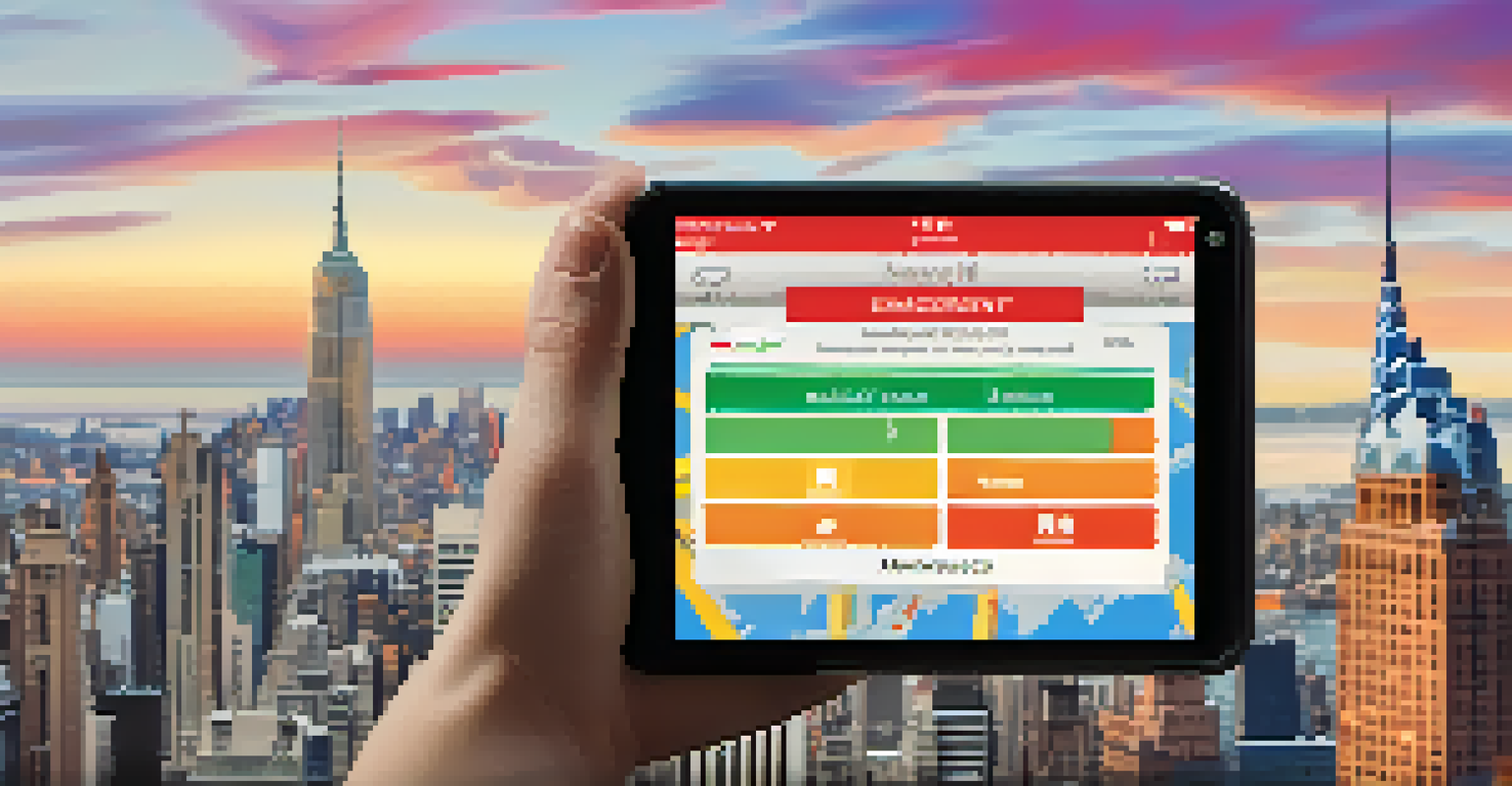Community Engagement in NYC's Crisis Management Efforts

The Importance of Community Engagement in Crisis Situations
Community engagement plays a crucial role in crisis management, especially in a bustling city like New York. When emergencies arise, local residents often have firsthand knowledge and insights that can guide effective responses. By involving the community, authorities can tap into diverse perspectives, enhancing their ability to tackle complex challenges.
In times of crisis, the best thing we can do is to come together as a community.
Moreover, when communities feel included in the decision-making process, they're more likely to cooperate and support crisis efforts. This cooperation can lead to quicker and more effective solutions, as residents often mobilize resources and share information rapidly. In essence, community engagement transforms citizens from passive observers into active participants in their safety.
In a city as vibrant as NYC, where neighborhoods can vary drastically, engaging each community uniquely ensures that responses are tailored to specific needs. This adaptability is key during times of crisis, allowing for efficient resource allocation and more effective communication strategies.
Historical Context: NYC's Past Crisis Management
New York City has faced its share of crises, from natural disasters to public health emergencies. The September 11 attacks in 2001 highlighted the critical need for community involvement in crisis response. In the aftermath, local organizations stepped up, demonstrating that grassroots efforts could complement official emergency services effectively.

Similarly, during Hurricane Sandy in 2012, community groups mobilized quickly to provide shelter, food, and support to those affected. These experiences underscored the importance of establishing strong community networks before crises occur. When disaster strikes, having these networks ready can mean the difference between chaos and coordinated efforts.
Community Engagement Boosts Crisis Response
Involving local residents enhances crisis management by utilizing their unique insights and fostering cooperation.
These historical events serve as poignant reminders that crises can foster a sense of solidarity among residents. New Yorkers have shown time and again that they can come together to support one another, reinforcing the idea that community engagement is not just beneficial; it's essential.
How NYC Involves Communities in Crisis Planning
New York City employs various strategies to involve communities in its crisis planning efforts. Town hall meetings, public forums, and workshops serve as platforms for residents to voice their concerns and contribute ideas. By creating these spaces for dialogue, the city ensures that community members feel their input is valued and taken seriously.
The strength of the team is each individual member. The strength of each member is the team.
Additionally, NYC's Office of Emergency Management collaborates with local organizations and leaders to develop tailored emergency plans. These partnerships help bridge the gap between government resources and community needs, ensuring that responses are both practical and culturally sensitive. Involving community leaders can also help disseminate information more effectively during a crisis.
Ultimately, this inclusive approach not only enhances preparedness but also fosters trust between residents and city officials. When communities are engaged, they become more resilient, capable of navigating crises with confidence and collaboration.
Case Study: Community Resilience During COVID-19
The COVID-19 pandemic presented unprecedented challenges for New York City, requiring innovative community engagement strategies. Local organizations rallied to provide critical resources like food, masks, and information to vulnerable populations. This grassroots response showcased the power of community engagement in crisis management.
Neighborhood groups organized initiatives such as mutual aid networks, where residents helped each other with grocery shopping and medical needs. These efforts not only addressed immediate concerns but also reinforced social ties among residents, fostering a sense of collective responsibility.
Historical Events Highlight Community Role
Past crises in NYC, such as 9/11 and Hurricane Sandy, underscore the importance of grassroots efforts in effective emergency responses.
As the city navigated the complexities of the pandemic, it became clear that communities were not just recipients of aid but active participants in the response. This shift in perspective highlighted the essential role that engaged communities play in overcoming crises.
Challenges to Community Engagement in Crisis Management
While community engagement is vital, it is not without its challenges. Misinformation can spread quickly during crises, making it difficult for communities to make informed decisions. When residents are not properly informed, their efforts may inadvertently hinder effective crisis management.
Moreover, diverse communities in NYC may face unique barriers such as language differences, socioeconomic disparities, and varying levels of trust in authorities. Addressing these barriers requires intentional outreach and communication strategies that resonate with all community members.
To overcome these challenges, city officials and community leaders must work together to foster transparency and build trust. This collaborative approach ensures that all voices are heard, allowing for a more unified and effective response during crises.
The Role of Technology in Enhancing Community Engagement
In today’s digital age, technology plays a significant role in facilitating community engagement during crises. Social media platforms, mobile apps, and online forums allow for real-time communication and information sharing. This immediacy can be crucial during emergencies when timely updates are needed to keep communities informed.
For example, NYC has used various apps to provide residents with alerts about emergencies, helping them respond quickly and effectively. These tools also enable feedback loops, where community members can share their experiences and needs, contributing to more responsive crisis management strategies.
Technology Enhances Community Involvement
Digital tools facilitate real-time communication, ensuring communities stay informed and engaged during crises.
However, it’s essential to ensure that technology is accessible to all residents. Bridging the digital divide is necessary to guarantee that everyone, regardless of their tech-savviness, can participate in community engagement efforts during crises.
Looking Ahead: Strengthening Community Engagement Strategies
As NYC continues to face various crises, strengthening community engagement strategies is paramount. This involves ongoing training for city officials and community leaders to effectively collaborate and communicate. Engaging residents in regular drills and preparedness workshops can also enhance resilience and readiness.
Additionally, fostering relationships with local organizations can ensure that engagement efforts are sustainable and impactful. By recognizing the valuable role that these organizations play, the city can create a more robust support network during emergencies.

Ultimately, the future of crisis management in NYC hinges on the ability to engage communities effectively. By prioritizing this engagement, the city can build a stronger, more resilient population ready to face any challenge.